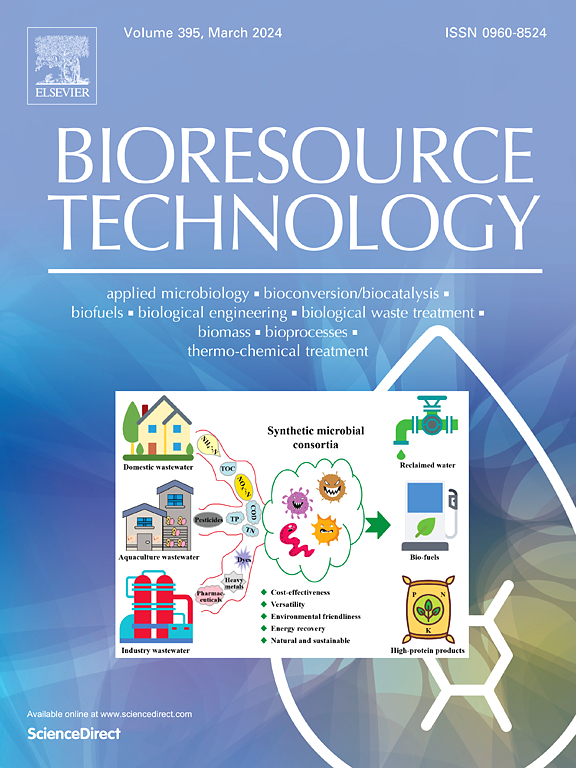Transition from Anammox to Feammox metabolic modes: Regulation strategies for nitrite in Anammox enrichment cultures
IF 9.7
1区 环境科学与生态学
Q1 AGRICULTURAL ENGINEERING
引用次数: 0
Abstract
This study achieved the metabolic transition from anaerobic ammonium oxidation (Anammox) to Fe(III)-mediated ammonium oxidation (Feammox) using iron-carbon micro-electrolytic spheres as a slow-release iron source through a stepwise reduction in influent NO2−-N concentration. The results demonstrated that sustained Feammox activity was governed by nitrate-dependent ferrous oxidation (NDFO) metabolism combined with oxygen-regulated Fe(III) regeneration, resulting in a peak total nitrogen removal efficiency of 91.6 % at 40 mg/L NO2−-N. While exclusive NH4+-N feeding inhibited Feammox activity, this suppression was reversible upon NO2−-N supplementation. Intriguingly, Anammox activity remained robust despite decreasing NO2−-N levels and showed significant positive correlation with Feammox activity, suggesting shared metabolic modules. Metagenomic profiling further identified Ca. Brocadia as the core functional genus driving NH4+-N oxidation, highlighting its niche adaptation in iron-mediated systems. These mechanistic insights establish a framework for designing energy-efficient nitrogen removal processes leveraging iron-redox cycling.
从厌氧氨氧化到氨氧化代谢模式的转变:厌氧氨氧化富集培养中亚硝酸盐的调节策略
本研究利用铁碳微电解球作为缓释铁源,通过逐步降低进水NO2−-N浓度,实现了厌氧氨氧化(Anammox)向铁(III)介导的氨氧化(Feammox)的代谢转变。结果表明,Feammox的持续活性受硝酸盐依赖的亚铁氧化(NDFO)代谢和氧调节的Fe(III)再生的控制,在40 mg/L NO2−-N条件下,Feammox的峰值总氮去除效率为91.6%。虽然完全饲喂NH4+-N会抑制Feammox活性,但这种抑制在补充NO2−-N时是可逆的。有趣的是,尽管NO2−-N水平降低,但厌氧氨氧化活性仍保持强劲,并与Feammox活性呈显著正相关,表明存在共享的代谢模块。宏基因组分析进一步发现Ca. Brocadia是驱动NH4+-N氧化的核心功能属,突出了其在铁介导系统中的生态位适应性。这些机制的见解为设计利用铁氧化还原循环的节能脱氮工艺建立了框架。
本文章由计算机程序翻译,如有差异,请以英文原文为准。
求助全文
约1分钟内获得全文
求助全文
来源期刊

Bioresource Technology
工程技术-能源与燃料
CiteScore
20.80
自引率
19.30%
发文量
2013
审稿时长
12 days
期刊介绍:
Bioresource Technology publishes original articles, review articles, case studies, and short communications covering the fundamentals, applications, and management of bioresource technology. The journal seeks to advance and disseminate knowledge across various areas related to biomass, biological waste treatment, bioenergy, biotransformations, bioresource systems analysis, and associated conversion or production technologies.
Topics include:
• Biofuels: liquid and gaseous biofuels production, modeling and economics
• Bioprocesses and bioproducts: biocatalysis and fermentations
• Biomass and feedstocks utilization: bioconversion of agro-industrial residues
• Environmental protection: biological waste treatment
• Thermochemical conversion of biomass: combustion, pyrolysis, gasification, catalysis.
 求助内容:
求助内容: 应助结果提醒方式:
应助结果提醒方式:


